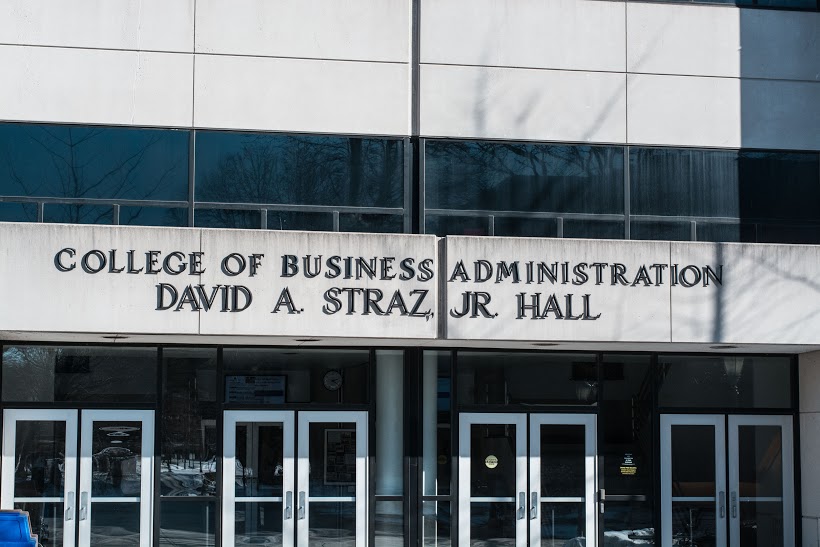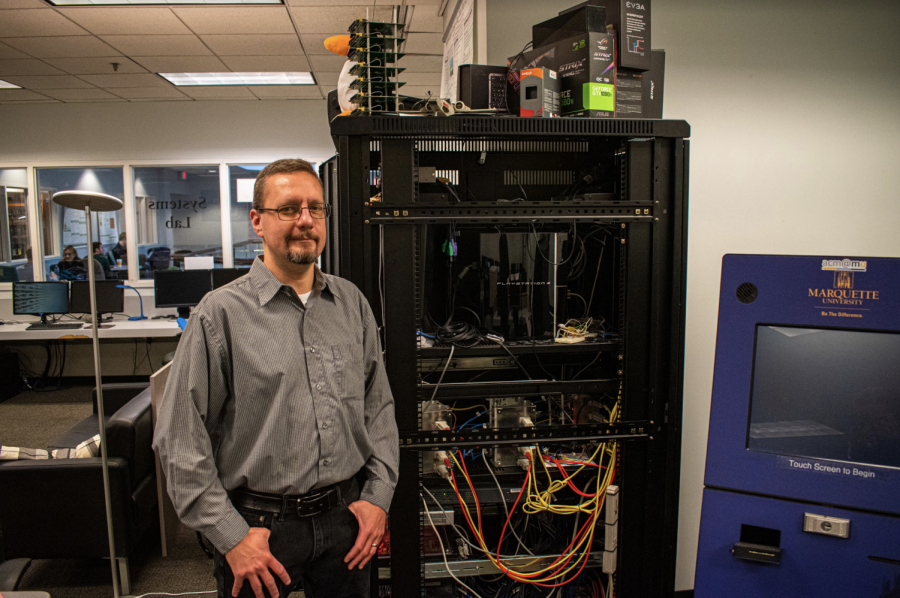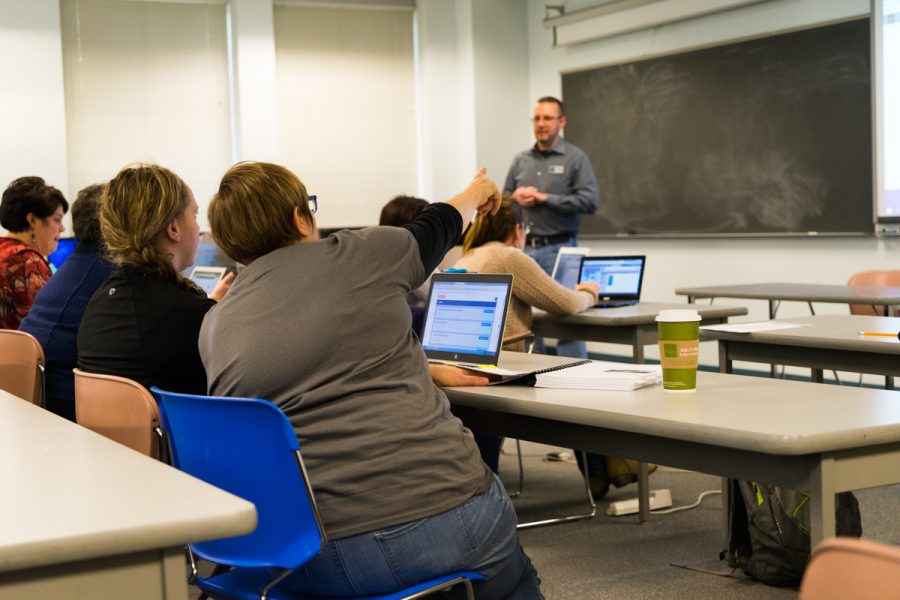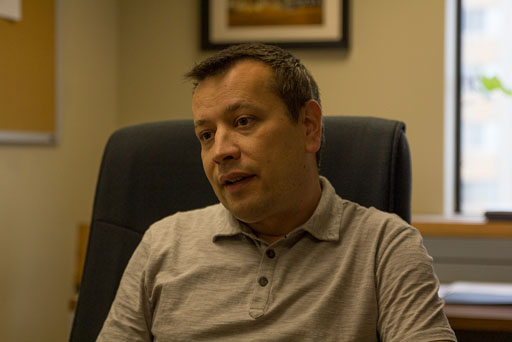When Theresa Le walked into her freshman seminar for computer engineering majors, she realized she was one of just three women out of more than 50 students.
Le, now a junior in the College of Engineering, knew before coming to Marquette that the computer-related disciplines were bound to be male-dominated, but the imbalance became even more clear at that moment.
“I was never one to hang out with the girls anyways in high school and middle school,” Le said. As early as high school, Le said she already had a passion for computers and electronics.
“I was amazed that these tiny little object are so powerful and know how to do so much,” Le said. “It always just blew my mind, so that’s why I decided I wanted to study computers.”
Women like Le are few and far between in the male-dominated — and thriving — high-tech world. While other science, technology, engineering and mathematics fields are slowly improving the gender balance, majors like computer science, computer engineering and IT are actually getting worse.
THE DISPARITY AND ITS SOURCES
According to the most recent reports from the National Center for Women & Information Technology, women accounted for 18 percent of computer and information-science bachelor’s degrees across U.S. colleges in 2010 — a 51 percent drop from 1985 when women made up 37 percent of high-tech degrees.
The disparity comes at a time when tech majors are in incredibly high demand. The U.S. Department of Labor estimates there will be 1.4 million computer specialist job openings by 2020, but U.S. universities will only generate enough graduates to fill less than a third of these jobs.
Dennis Brylow, an associate professor of computer science and electrical and computer engineering, said he has long been worried about the gender imbalance in tech fields.
“If you go through and look at the graduation bulletin, we’ve graduated about 70 computer science majors in the past seven years,” Brylow said. “Seven of those are women.”
Typically, Brylow’s classes are made up about 25 students, with some including one or even no female students. “I have had that happen several times in the last few years and then there’s nothing you as a professor can do to make that not the case,” he said. “She’s always going to be the only girl there.”
Brylow and most experts in the field suggest the problem of attracting women begins years before a female student walks onto Marquette’s campus.
“Here at Marquette, we get a huge number of white male students from affluent districts that had a computer science course in high school because that’s where most of those courses are in the state,” Brylow said. “There’s 400 some high schools in Wisconsin, only about 32 of them have an AP computer science teacher. It’s terrible. There are 76,000 schoolchildren in the Milwaukee Public School System, 20-some high schools, and only one of them has a computer science teacher.”
As part of an aggressive plan to improve high school education problems like this across the country, the National Science Foundation spends $15 million each year to develop computing education with a goal to have 10,000 high school teachers prepared to teach it by 2016.
Beginning this year, the NSF funded the PUMP-CS Project, a collaboration between Marquette and several UW-schools. Brylow serves as a ringleader for the program, which aims to train more than 60 high school teachers from all different disciplines in the next three years so they can bring computer science into high school classrooms. One of the courses offered will be “Exploring Computer Science,” a course specifically designed to democratize the subject and focus on attracting underrepresented groups into the discipline.
“We’re never going to be able to fill this job gap if 70 percent of this country don’t even walk in the door because they don’t think it’s right for them,” Brylow said. “Women are already registering for college classes in 12th grade. By then, it’s too late. It’s got to be early when we can let girls know that this can be something you’re good at. This can be your thing!”
Similar programs for outreach can be seen in the engineering school including the iHEELS program, an engineering camp exclusively for girls from elementary and middle schools.
Jon Jensen, associate dean for enrollment management in the College of Engineering, said the iHEELS program began when Marquette received a Motorola’s Innovation Generation Grant. The university continued the classes after the funding ran out.
“I think one of the most effective parts of the program is that the girls get to hear about engineering from some of our best female students,” Jensen said. “These girls love to hear from an actual college kid.”
Le taught in the program the summer before her sophomore year, and said she plans to pursue a teaching position after a few years working as a computer engineer in the industry.
“I think having professors and female teachers really does inspire women to become engineers,” Le said. “I’m not bothered by the fact that all my professors are male, but anytime I run into a successful female computer engineer later in her career, I want to know what it was like for them back then. I want to have that knowledge passed on so that we can know how you get more women into engineering.”
PERCEPTIONS ABOUT THE TECH FIELD
Beyond a lack of high school education, social perceptions are also a significant barrier to tech fields for women in Western nations, said Monica Adya, an associate professor in the Information Technology department.
“By the time (women) hit middle school and high school, there is a lot of social pressure that take them out of the math and science careers because they are considered nerdy,” Adya said, who worked in IT for 24 years. “It’s harder to fit in when you’re perceived as such and I think a lot of women get deterred from that perception.”
Adya also said the field suffers from its “boys club” reputation. Adya conducted research that compared women from South Asia working in IT fields to their female counterparts raised in the U.S.
“In countries like India, China and Sri Lanka, the participation of women in technology careers has been on the rise,” Adya said.
As a result of interviews with South Asian women, Adya discovered most do not perceive IT as a masculine career, which eliminates a major barrier of entry.
Though Marquette’s IT department faces similar obstacles as the computer science and computer engineering majors, the percentage of female students majoring in IT are significantly higher at around 25 to 30 percent of graduates.
“In the business school we are seeing more participation of women who see it as a good combination with other fields such as marketing or finance,” Adya said. “We try to break down the perception that IT is all about programming and coding and you build computers and laptops and that’s really all you do your whole life. That’s not true at all.”
In fact, Adya noted most students from the IT program are often placed in people-oriented positions and that the field offers flexibility with regard to career paths.
A connection with the business school also helps the IT department because all students are required to take an Introduction to Information Technology course. After taking the course, Kristin San Ramon, a senior in the College of Business Administration, decided to add IT as a second major along with her degree in marketing. She was attracted to the practical and management aspects along with the more technical features of the courses.
“It’s such a growing area and I love it,” San Ramon said. “I found that if you act like a person who loves what they do, that’s the best way to combat any stereotype people might have about who can be in IT.”










